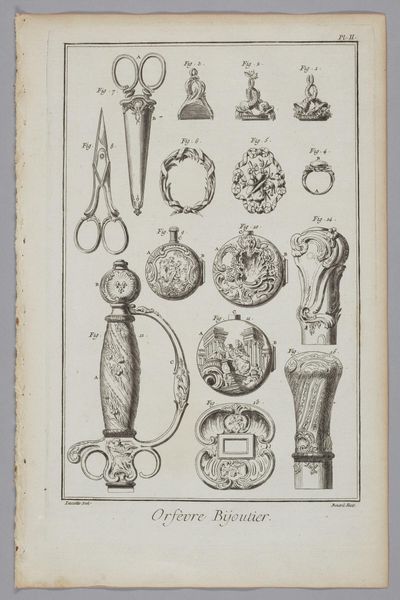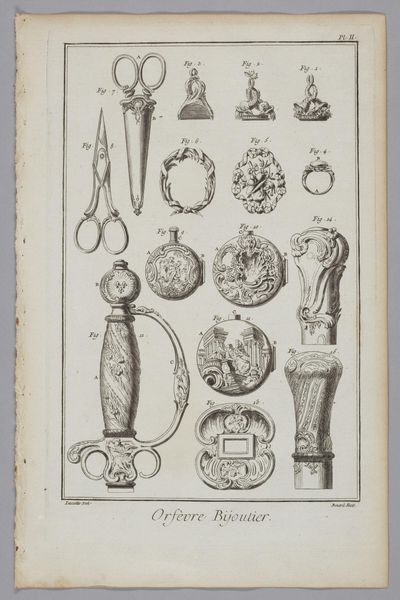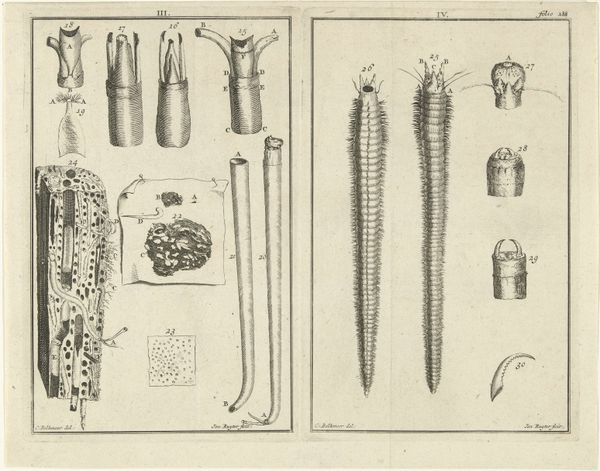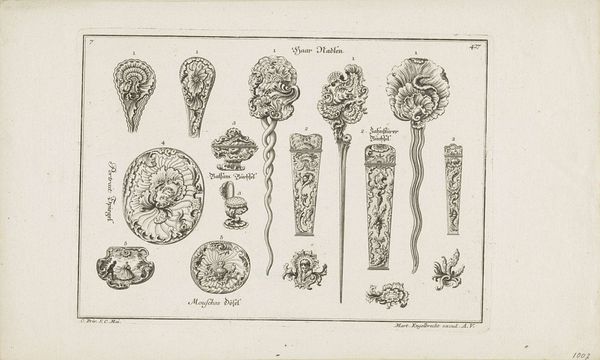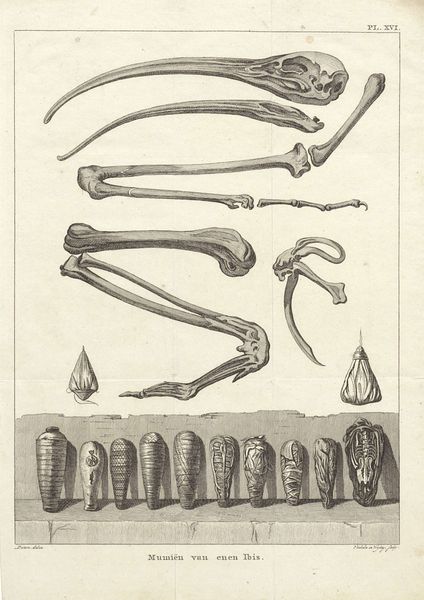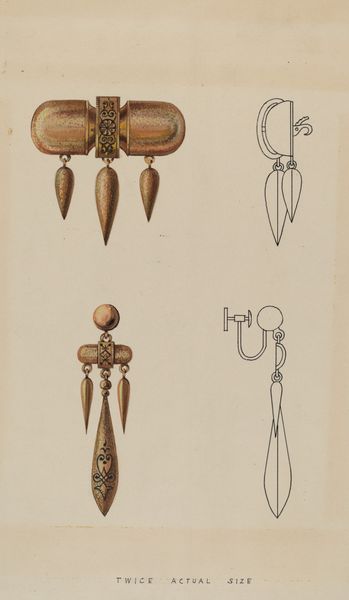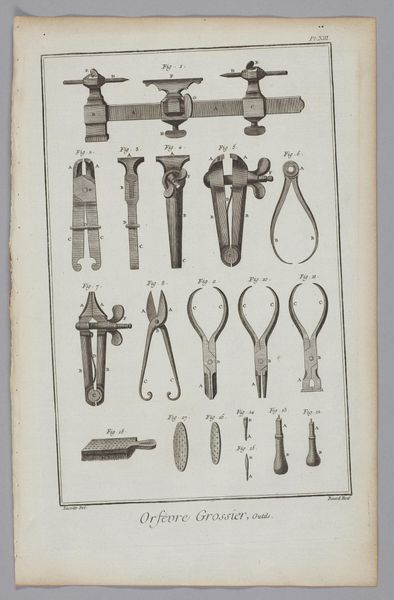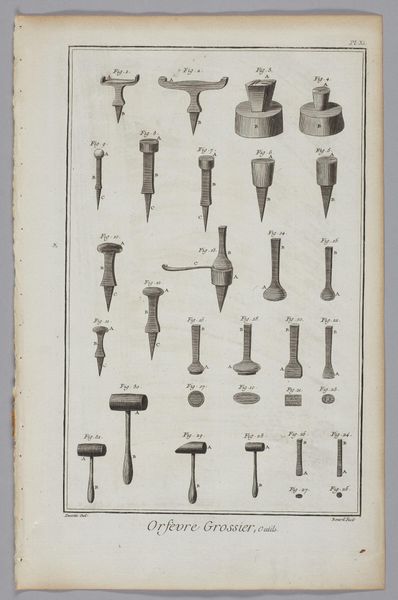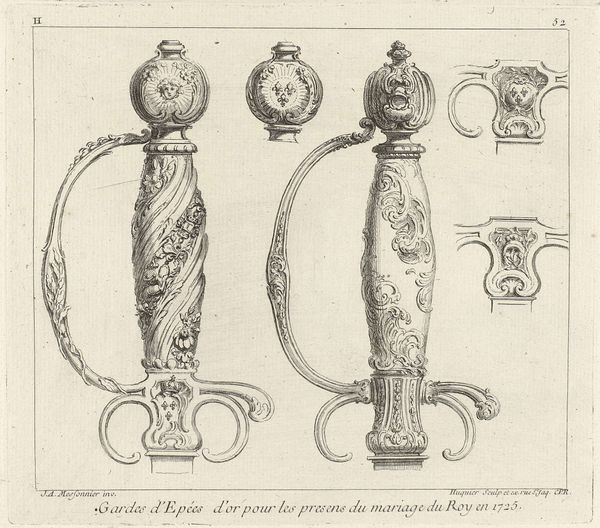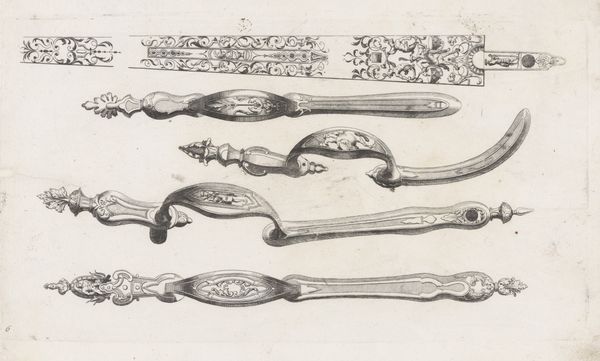
drawing, engraving
#
drawing
#
baroque
#
old engraving style
#
engraving
Dimensions: height 183 mm, width 254 mm
Copyright: Rijks Museum: Open Domain
Editor: This is a print titled "Drie scharen en twee knoppen voor een wandelstok," or "Three scissors and two knobs for a cane" by Gabriel Huquier, made between 1738 and 1749. It's currently at the Rijksmuseum. The meticulous details, especially on everyday objects, are really striking. What story does this piece tell you? Curator: It reflects the 18th-century obsession with ornamentation extending even to utilitarian objects. The presence of exquisitely decorated scissors and cane knobs point towards a society deeply invested in displays of wealth and status through these possessions. Consider how the very act of engraving and disseminating these designs through prints democratizes luxury...or at least, the idea of it. Do you see how it places these items in the cultural conversation? Editor: So, these aren't just tools but symbols? Are they promoting design ideas or the aspiration to a particular lifestyle? Curator: Precisely. It serves as a visual language for aspirations to nobility. The baroque style itself signifies a deliberate break from functional simplicity. What role do you think workshops played at that time, since we see several names credited? Editor: I'd imagine there was a creative exchange between artist and craftsman. Seeing their signatures on it probably means a commitment to quality or artistic trends, especially if those designs could be distributed widely as prints. Curator: Absolutely. The image suggests an ecosystem where design, craft, and printmaking all worked together, influencing taste and social standing. It shifts the focus of art from simply the fine arts, painting and sculpture, to everyday experiences. Editor: I hadn’t considered how profoundly decorative arts were intertwined with broader social currents back then. I guess seeing everyday objects elevated to an art form has really broadened my appreciation for its social context. Curator: It’s rewarding to realize how the art of the past permeates the objects around us and how these seemingly trivial designs were statements in their time.
Comments
No comments
Be the first to comment and join the conversation on the ultimate creative platform.
